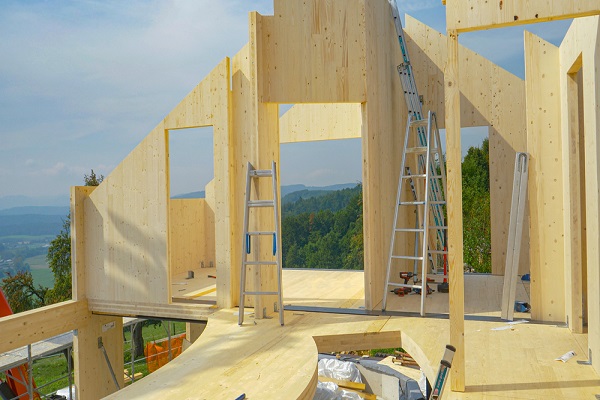3 Tips to Help Construction Clients with Technology and New Materials Exposures

By: Olivia Overman
Supply chain disruptions and labor shortages look set to continue to challenge the construction industry for the foreseeable future. But with the development and availability of alternative materials, new business opportunities may present themselves for construction clients.
Through the use of alternative building materials, such as mass timber, as well as technology, such as drones and 3D printing, new trends in the construction industry offer options to provide the best path forward.
“I have seen the use of drones both on the general contractor’s side of things and also with the inspection companies used by the insurance carriers,” says Nick Cavaness, senior property broker, Risk Placement Services Inc. “The drones are used in multiple ways—for security reasons and sometimes for general contractors to quickly navigate a site and check in on construction activities. Underwriters are then able to take that into consideration when providing their rate or if they will consider deploying capacity on a specific project.”
From cloud-based collaboration and the development of digital twins to robots, super-materials, wearable tech, pollution-eating buildings, and even artificial intelligence (AI), technology in the construction industry is an emerging trend that is set to bring additional risk that builders, agents and carriers must take into consideration.
Meanwhile, the drive toward sustainability and efficiency in the industry is also forcing risk to evolve. Numerous alternative materials have appeared to replace or supplement traditional materials. Composite materials, such as fiberglass reinforcement, composite sheet piles and composite metal, have all been used successfully, according to the construction consultancy firm Linesight.
Other materials such as cross-laminated timber, also known as mass timber, have shown their strength and improved fire resistance, which make it a viable alternative for certain applications, according to Hub International. “Bendable” concrete has also demonstrated that it has greater durability than regular concrete, reducing the need for costly repairs down the line.
“We have started to see alternative materials, such as mass timber, being used,” says Jeff Benson, construction program manager, Victor Insurance Managers Inc. “But while we will write a project that’s mass timber, we don’t treat it any differently at this point because there’s not enough data out there for us to say it performs better or worse.”
“Once ISO weighs in on this, then we will adopt that,” Benson adds.
Evolution is a continual trend in the construction industry. In 1990, the green building rating system was launched, introducing the concept of sustainable design that has continued to develop.
“If a building is Leadership in Energy and Environmental Design (LEED) certified or it has some other ‘green’ certification, carriers have been offering coverage to have the building recertified if there is a loss and it has to be rebuilt,” Benson says. “It is important to encourage and support green initiatives.”
When it comes to supporting clients using alternative materials or technology, agents can help clients understand the insurance implications. Here are four things to explain:
1) Lay a strong foundation. “From the beginning, ensure that you’ve got a strong labor force and subcontractors with proper training in place. Also, recognize that when new materials are introduced or building designs are contemplated, it’s important that these changes are discussed with all project stakeholders,” says Ken Wengert, vice president, risk control—construction, energy and marine, Travelers.
2) Communicate changes in materials. Communication is key to ensuring clients understand the product and the manufacturer’s recommended installation guidance.
“Any changes made because of supply chain issues that impact the types of materials insured should be reviewed and approved by the architect and engineer,” Wengert says. “It’s important those materials meet the project specifications and are compatible to work within the rest of the project as an integrated system.”
3) Don’t just place the insurance. Agents can be a partner with their clients. “Insurance premiums are some of the largest expenses a construction company has, so clients need to rely on their agent for risk management best practices and long-term planning to reduce costs as much as possible,” says McCay Bowdoin, practice leader, construction and homebuilders program, Oakbridge Insurance.
Olivia Overman is IA content editor.










